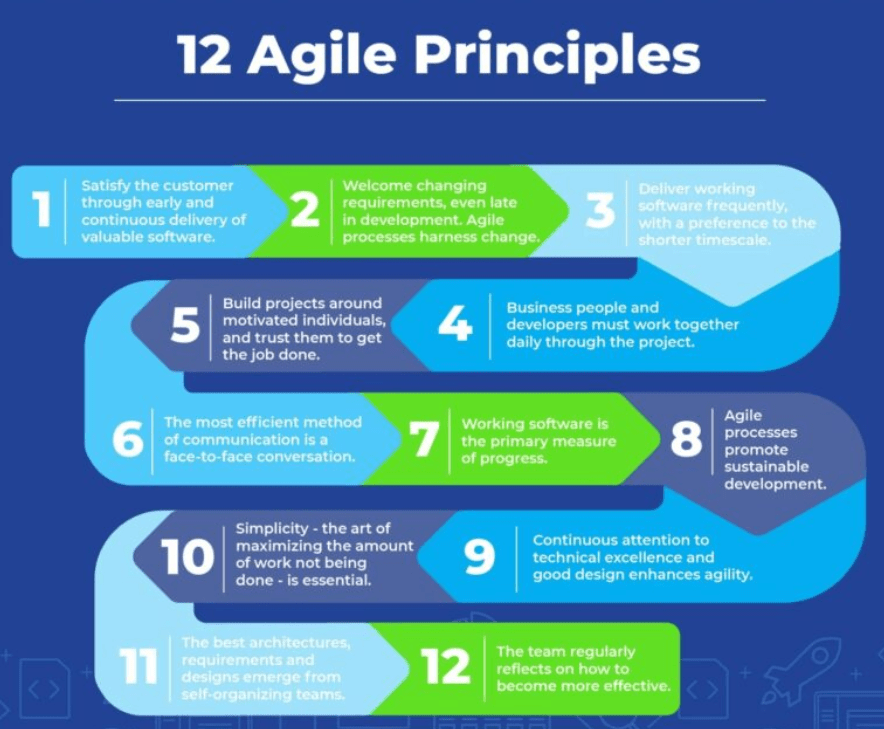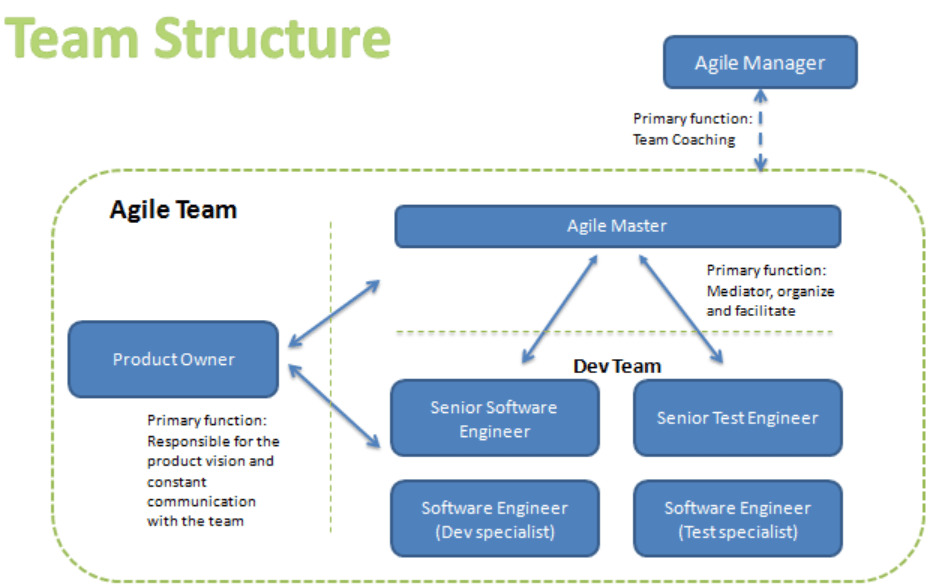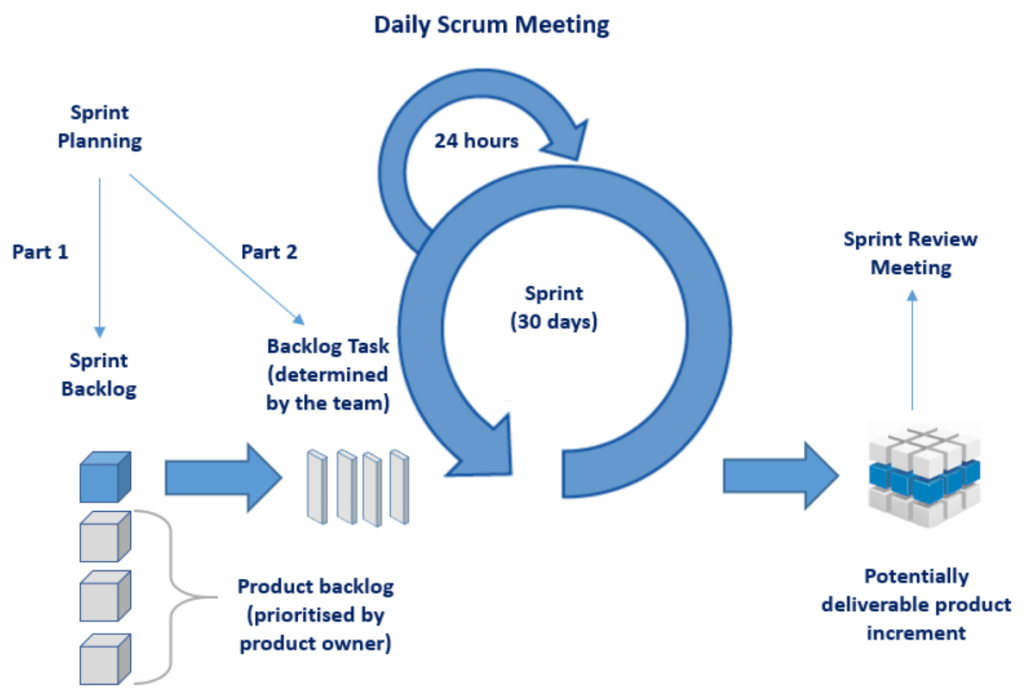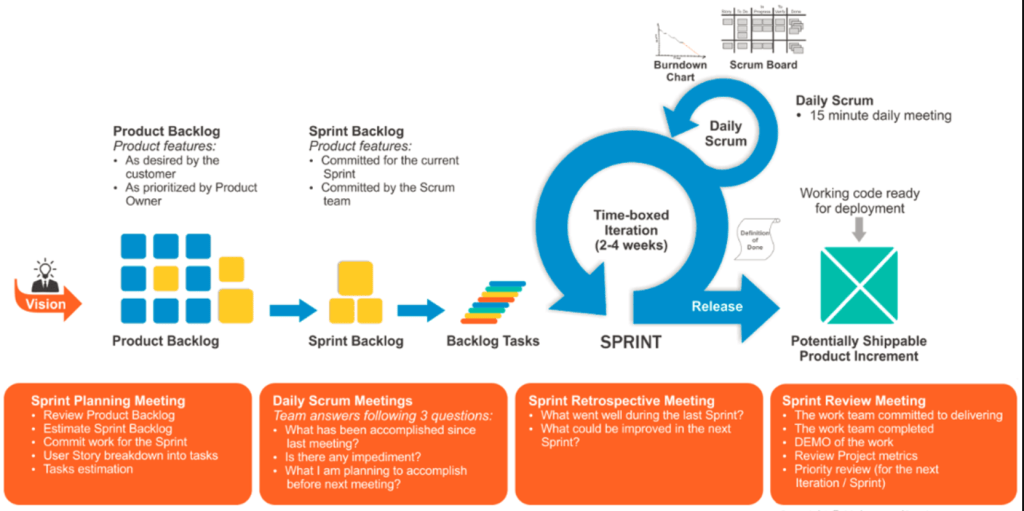The Agile Marketing Revolution: Staying Ahead of the Competition
Introduction:
What if I say that I have a newly launched “Pen” and I have to sell it to one of my clients or stakeholders.
Well, anyone can sell a “pen” by exposing its good qualities, even a non-marketing person too but only the best one would be sold out in the market, and the product that has the best and different version and quality in the market would be sold.
“This is where agile marketing comes in: small bursts of quickly developed content designed to catch the public mood at just the right time in order to capitalize on a brand-new global trend.”
In this blog, I will take a deep dive into the Agile marketing methodology, how we can implement it, and the best marketing project management tool to help manage our marketing strategy.
What Is Agile Marketing?
Agile marketing is a new marketing approach that uses the powers of the Agile methodology to boost your sales and marketing efforts. It is a method of marketing that prioritizes flexibility and quick adaptation to change. It emphasizes teamwork, collaboration, and iterative processes, with an emphasis on delivering small, incremental improvements.
Agile marketing takes a break from the ‘huge marketing campaign’ model that was used in the era of ‘Mad Men.’
Instead of spending months planning and creating an expensive marketing project, an Agile team can quickly respond to market changes in just a few weeks!
How does it work?
An Agile marketing team works on a project in short bursts, called sprints. At the end of each 2–4-month sprint, the team measures how well the projects did, and then works to improve their projects every sprint.
Result:
The marketing department is able to work quickly and efficiently without sacrificing its quality.
But how do we truly define what Agile marketing is?
For that, we’ll need to take a peek at the Agile marketing manifesto.
What is the Agile marketing manifesto?
The Agile Marketing Manifesto is a set of principles for agile marketing, similar to the Agile Software Development Manifesto. It outlines the core values and principles that guide Agile Marketing practices. The Agile Marketing Manifesto consists of the following four values:
- Customer focus: The focus is on delivering value to customers by understanding their needs and priorities.
- Adaptation: The ability to respond to change and adapt to new opportunities is more important than following a fixed plan.
- Collaboration: Cross-functional teamwork and collaboration between marketers, IT, and other stakeholders is essential.
- Measurement: Continuous measurement and improvement of marketing efforts are critical to success.
But what do these points even mean?
To understand this let’s understand the 12 Agile marketing principles:
These Agile principles act as guidelines of what we should and shouldn’t do when we are using an Agile marketing strategy:

How Is Agile Marketing Implemented?
Agile adoption isn’t as easy as flicking on a switch. It takes some time for the team to organize their work and restructure so that they can transition into a fully functional Agile marketing team.
Here’s a 5-step process that can help our marketing team to implement Agile practices quickly:
Let’s take a closer look at the steps to Agile adoption:
Organize an Agile team:
An Agile team isn’t just our average everyday team.
It’s a cross functional team that works independently towards a goal.
What’s a cross functional team?
It’s a small team (5-8 members), made up of professionals with different departments, which can include inbound marketing, digital marketing, UI/UX designers, social media planners, a creative team, etc.
This team structure can vary from project to project.
But wait, we can’t have a ship without a captain, right?
We will need to appoint a marketing owner (similar to a product owner in Agile). The owner generally is a marketing leader like the Chief Marketing Officer, regional brand manager; you get the picture.
They help create the Agile marketing strategy that the team needs to follow over a sprint.
But that’s not all. It requires experienced Agile leader or scrum master.
They set up the agile workflows and help the team use Agile practices efficiently. And if needed, they can motivate your team like a real football coach would!

Set measurable goals and objectives:
For a better agile marketing team, we must follow a good marketing planning process.
An Agile marketing team should measure the results of their marketing campaign, and not how much work went into it.
The best way to track their results is by setting smart goals and objectives.
The marketing leader and the team must decide on three things:
- The metrics they should focus on (conversion rate, sales, page views, etc.)
- Their objectives and targets (increase social media followers by 15%, etc.)
- The tools they’ll use to capture and manage data.
Create and prioritize a backlog:
Now that the marketing goals are set, the team should have locked in on an Agile marketing strategy.
It’s time to decide which tasks they need to work on during the sprint. Just like an Agile team, your marketing team must host a sprint planning meeting to compile a ‘To-Do’ list for the sprint.
Also known as the sprint backlog, this list contains tons of work items ranging from small initiatives, big campaign ideas, and even a few cool experimental marketing projects.
Before we discuss how to create sprint and product backlog lets know a bit about these two terms.
Sprint backlog:
A sprint backlog is a list of tasks, stories, or work items that are defined for a sprint in the Agile methodology. It represents the team’s plan for what work will be done during the upcoming sprint and serves as a prioritized to-do list for the development team to complete. The sprint backlog is typically owned and managed by the development team and is updated regularly throughout the sprint to reflect the progress being made and any changes in priorities.
Product backlog:
A product backlog is a prioritized list of features, enhancements, and bug fixes that are required for a product or project in Agile methodology. It serves as a prioritized to-do list for the development team, outlining the work that needs to be done to meet the goals and objectives of the product. The product backlog is owned by the product owner and is continually updated throughout the product development cycle to reflect changes in priorities, new insights, and feedback from stakeholders.
we will need to prioritize what tasks our marketing team should approach first. Ideally, our team should aim for the highest value marketing project on this list.
Creating and prioritizing a backlog in Agile methodology involves the following steps:
- Define the product or project goals: This will provide the context for what needs to be included in the backlog.
- Gather ideas and requirements: Work with stakeholders to identify the features, enhancements, and bug fixes that are needed to achieve the goals.
- Refine the items: Ensure that each item in the backlog is well-defined, with clear acceptance criteria and an estimate of the effort required to implement it.
- Prioritize the items: Based on the product goals, constraints, and available resources, prioritize the items in the backlog so that the most important work is done first.
- Review and update the backlog regularly: Continuously reassess the priorities in the backlog in light of changing circumstances and feedback from stakeholders.
The aim of creating and prioritizing a backlog is to have a clear, up-to-date, and prioritized plan of work that the development team can use to guide their efforts and make informed decisions.

Work in iterations or sprints:
Working in iterations or sprints is a key aspect of Agile methodology. In this approach, the development team works in short, time-boxed periods, usually one to four weeks, to deliver a usable product increment. The sprints are structured as follows:
Sprint planning: The team reviews the product backlog, selects items to include in the upcoming sprint, and defines the sprint goal.
Sprint execution: The team works on the items selected for the sprint, using Agile techniques such as daily stand-up meetings, pair programming, and continuous integration and delivery.
Sprint review: The team demonstrates the work completed during the sprint and gathers feedback from stakeholders.
Sprint retrospective: The team reflects on the sprint, identifies areas for improvement, and makes a plan to apply these improvements in the next sprint.
Whenever an Agile marketer either starts or finishes a task, they pick and move the card to the relevant column.

Measure progress and focus on continuous improvement:
Now, it’s time to take a look at the results.
By going through consumer data (clicks, shares, conversions, etc.), we can identify what marketing tactics and strategies worked and which tanked.
This way, we can replicate every high-performing marketing strategy in a future sprint.
What if we want to see how our Agile team performed in a sprint?
To see how an Agile team performed in a sprint, you can use the following metrics:
Sprint Goal Completion: This measures the extent to which the sprint goal was achieved and provides a high-level view of the team’s performance.
Sprint Backlog Completion: This measures the extent to which the items in the sprint backlog were completed and provides a detailed view of the team’s work.
Velocity: This is the average amount of work the team completes in a sprint and provides an indication of the team’s capacity and capability.
Lead Time: This is the time it takes for a user story to go from the product backlog to delivery and provides an indication of the efficiency of the team’s processes.
Defect Density: This is the number of defects found per unit of work and provides an indication of the quality of the team’s work.
Sprint Retrospective Feedback: This is feedback gathered from the team during the sprint retrospective and provides an opportunity to understand what went well and what needs improvement.
How is Agile marketing different from traditional marketing?
Traditional marketers follow a rigid plan. A traditional marketing team set goals and work on a single strategy until they’ve created a marketing campaign. Once the project is launched, they move on to the next.
Meanwhile, an Agile marketing team believes in continuous improvement. Unlike traditional marketing teams, they tweak campaigns and projects months after they’ve launched.

Conclusion:
Agile marketing methodology is a great new way to supercharge the marketing efforts.
we will be able to get marketing campaigns out of the door faster than we can say ‘Sterling Cooper.’
However, unlike the Mad Men, we can’t do this without the right technology.
we will need a sophisticated Agile marketing tool like ‘ClickUp and JIRA’ to help the plan and execute Agile projects with ease.
Add Comment
You must be logged in to post a comment.








